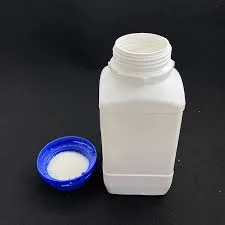Understanding Plastic Stabilizers Ensuring Durability and Performance in Plastics
In the modern world, plastics are ubiquitous, found in everything from packaging to automotive parts, and even in medical devices. However, the performance and longevity of plastic materials can be significantly impacted by various factors, including environmental conditions such as UV radiation, heat, and moisture. This is where plastic stabilizers come into play, serving a critical role in enhancing the durability and performance of plastic products.
What Are Plastic Stabilizers?
Plastic stabilizers are additives that are incorporated into plastic formulations to improve the resistance of the material to degradation caused by exposure to environmental factors. These stabilizers work by mitigating the negative impacts of heat, light, and chemical exposure, thus prolonging the service life of plastic products. There are several types of plastic stabilizers, each designed to address specific challenges faced by different types of plastics.
Types of Plastic Stabilizers
1. UV Stabilizers Ultraviolet (UV) radiation can cause significant degradation of plastics, leading to discoloration, brittleness, and mechanical failure. UV stabilizers, such as UV absorbers and hindered amine light stabilizers (HALS), are added to plastics to absorb harmful UV radiation, preventing it from reaching the polymer matrix. These stabilizers can enhance the aesthetic properties of plastics by maintaining color and clarity over time.
2. Thermal Stabilizers Heat can also cause degradation of plastics through process-induced breakdown and oxidation. Thermal stabilizers, often based on metal salts or organic compounds, are introduced to improve thermal stability and decrease the likelihood of thermal degradation during manufacturing and end-use. For instance, lead-based thermal stabilizers were commonly used in the past; however, due to environmental concerns, alternatives like calcium-zinc and organotin stabilizers have gained popularity.
plastic stabilizers

3. Antioxidants These stabilizers play a crucial role in preventing the oxidative degradation of plastics. During processing and application, the exposure to high temperatures can trigger oxidative reactions, leading to a decline in mechanical properties. Antioxidants like phenolic compounds and phosphites scavenge free radicals, thus protecting the polymer structure and extending the material’s lifespan.
4. Fracture Toughness Improvers Some plastic stabilizers are formulated to enhance the mechanical properties of plastics, ensuring that they can withstand stress and impact. This is particularly important for engineering plastics used in critical applications. Toughening agents modify the polymer matrix to improve its resilience, making it less susceptible to cracking and breaking.
Importance of Plastic Stabilizers
The importance of plastic stabilizers cannot be overstated. In the absence of these additives, plastic products would face accelerated degradation, leading to shortened lifespans and increased waste. By incorporating stabilizers, manufacturers can produce longer-lasting products that maintain performance and appearance, contributing to sustainability efforts.
Moreover, stabilizers also enable the use of recycled plastics in various applications. By improving the stability of recycled materials, manufacturers can reduce the demand for virgin plastics, thereby lessening the environmental impact associated with plastic production. As a result, the role of plastic stabilizers aligns with the broader goal of creating circular economies in the plastic industry.
Conclusion
In conclusion, plastic stabilizers are an essential component in the production of high-quality, durable plastic products. Their ability to enhance resistance to environmental stressors ultimately contributes to the longevity and performance of plastics. As the industry continues to evolve, the development of new and improved stabilizers will play a pivotal role in addressing environmental challenges, promoting recycling, and fostering sustainability. With a growing emphasis on creating more environmentally friendly materials, the future of plastic stabilization will likely see even more innovative solutions to meet the demands of modern applications while minimizing ecological footprints.

